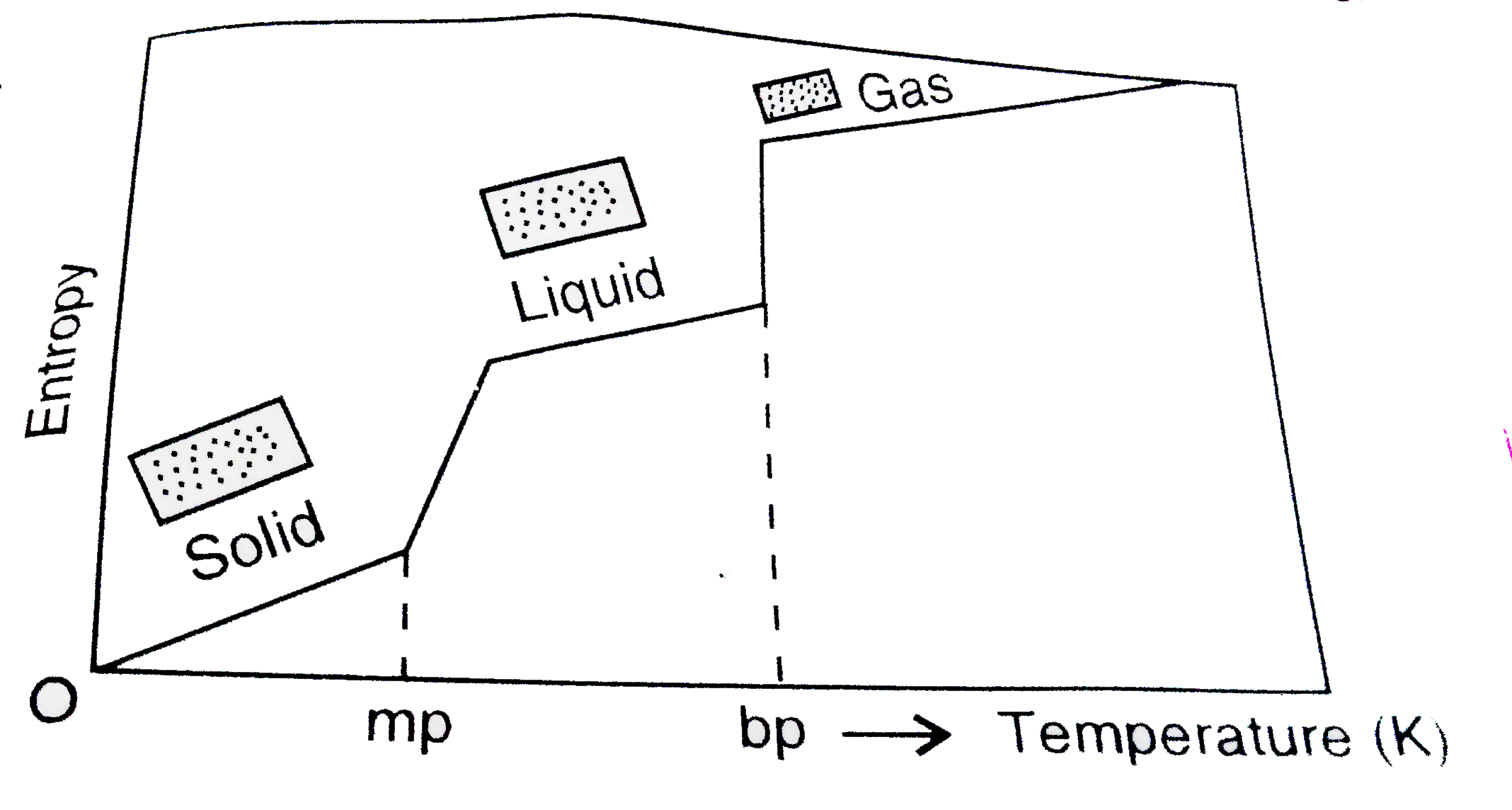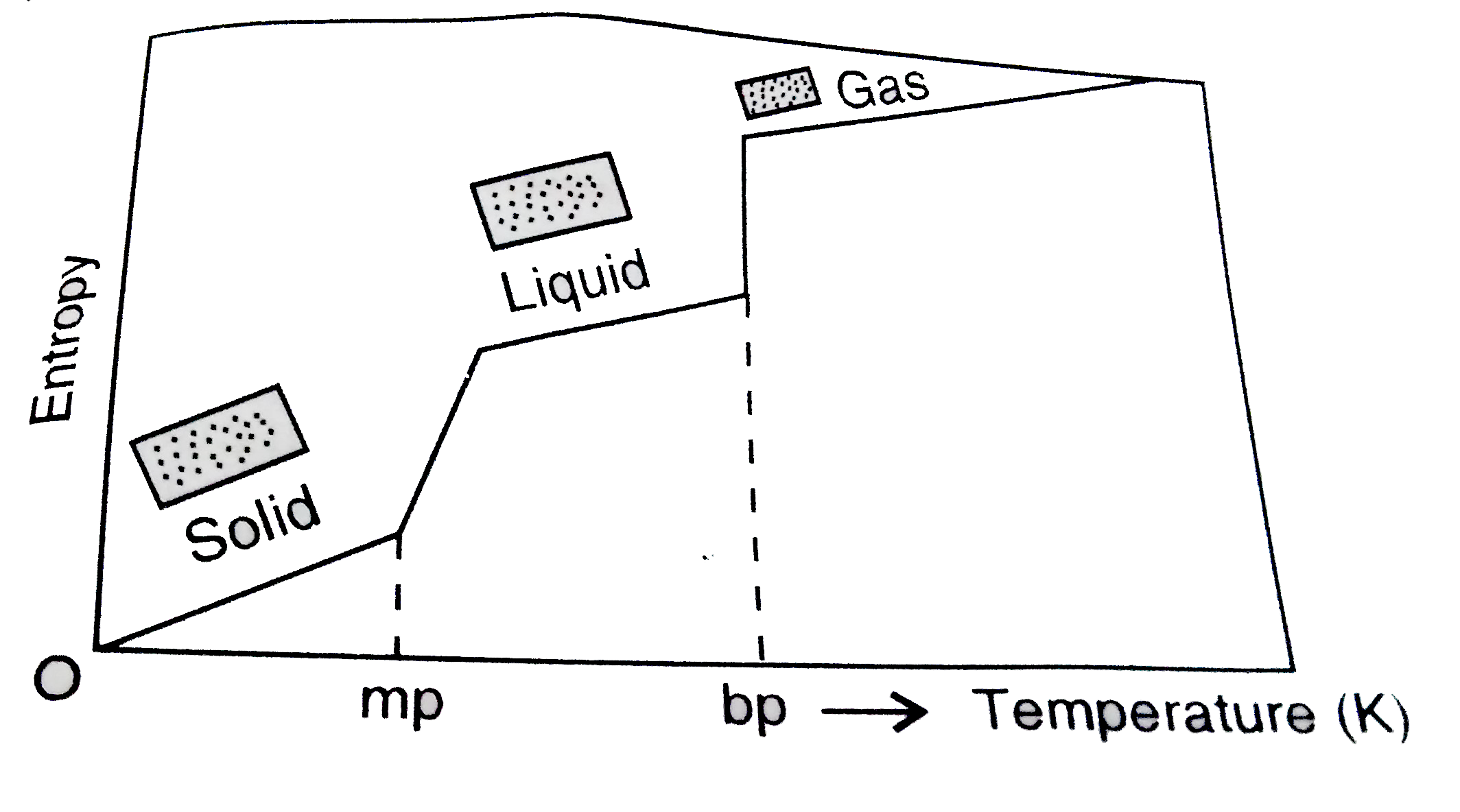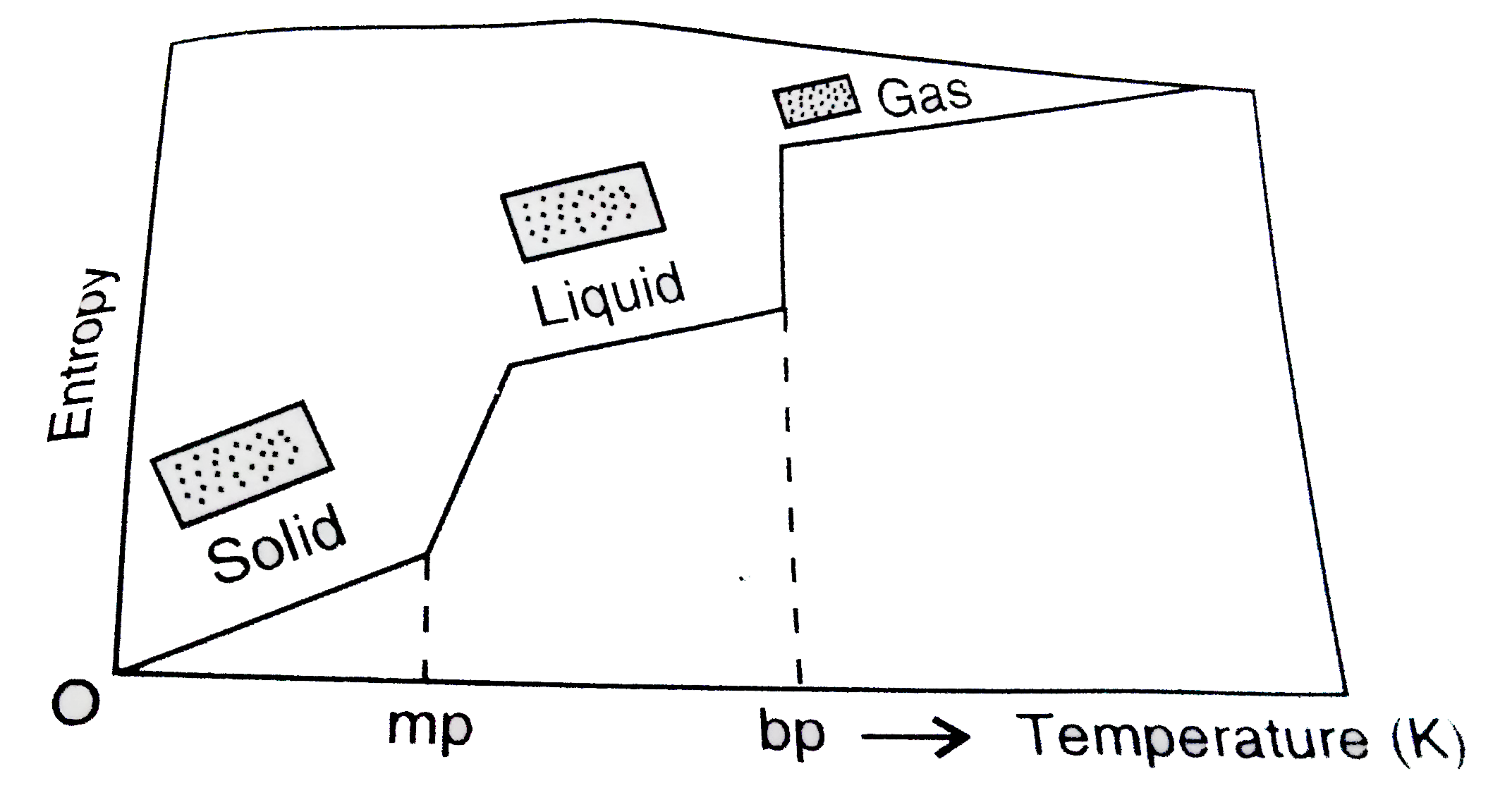During winters, moisture condness in the form of dew and can be seen on plant leaves and grass. The entropy of the system in such cases decreases as liquids posses lesser disorder compared to gases. With prefrence to the second law, which statement is correct, for the above proces?
The randomnes of the unierse decreases.
The randomnesof the surroundings decreases.
Increases is randomne of surrroundings equals the decreases in randomnes of system.
The increase in randomnes of the surrounding is greater as compared to the decrease in randomnes of the system.
The correct Answer is:D
Step by step video, text & image solution for During winters, moisture condness in the form of dew and can be seen on plant leaves and grass. The entropy of the system in such cases decreases as liquids posses lesser disorder compared to gases. With prefrence to the second law, which statement is correct, for the above proces? by Chemistry experts to help you in doubts & scoring excellent marks in Class 11 exams.
Updated on:21/07/2023Topper's Solved these Questions
Similar Questions
If a system at equilibrium is subjected to a change of any one of the factors such as concentration , pressure or temperature, the system adjusts itself in such a way so as to minimise the effect of that change.
Effect of change in concentration on equilibrium:
As we add or remove reactant (or product) the ratio of equilibrium concentratio become 'Q' (reaction quotient) and depending upon.
Q<K: equilibrium will shift ihn forward direction
Q>K equilibrium will shift in backward direction
Effect of change in pressure :
If a system in equilibrium consists of gases, then the concentrations of all the components can be altered by changing the pressure. When the pressure on the system is increased, then equilibrium will shift in the direction in which there is decrease in number of moles i.e., towards the direction in which there is decrease in volume.
Effect of change in pressure on melting point : There are two rypes of solids :
Solids whose volume decreases on melting, e.g., ice, diamond, carborundum, magnesium nitride and quartz.
Solid (higher volume) ⇔ Liquid (higher volume)
The process of melting is facillitated at high pressure, thus melting point is lowered.
Solid whose volume increase on melting, e.g., Fe, Cu, Ag, Au, etc.
Solid (lower volume) ⇔ Liquid (higher volume)
In this case the process of melring becomes difficult at high pressure, thuse melting point becomes high.
Solubility of substances : When solid substance are dissolved in water, either heat is evolved.
for endothermic solubility process solubility increase with increase in temperature. For exothemic solubility decrease with increase in temperature.
Solubility of gases in liquids : when a gas dissolves in liquid, there is decreases in voolume. Thus increase of pressure will faavour the dissolution of gas in liquid.
Effect of temperature : For endotherimic reacrtion as temperature increases reaction shift in backward direction
Fe(l)⇔Fe(s)
Above equilibrium is favaured at :
View SolutionEnergy is associated with the orientation and distribution of molecules in space. Disordered crystals have higher entropy than ordered crystals and diffused gases have higher entropy than compressed gases.

Entropy is also associated with molecular motion. As the temperature of a substance increases, random molecular motion increases hence entropy increases. Figure gives variation of entropy with temperature. At absolute zero (−273∘C) every substance is in solid state whose particles are rigidly fixed in a crystalline structure. If there is no residual orientational disorder, like that in CO, entropy of the substance is zero. Third law of thermodynamics states.
At the absolute zero of temperature the entropy of every substance become zero and does become zero in case of perfectly crystalline structure.
understand(T→0)(LtS)=0
In case of CO and NO molecules in solid state, there is randomness even at 0K due to their dipole moments hence entropy in such cases is not zero even at 0K. As the temperature is raised, the molecules begin to vibrate. The number of ways in which the vibrational energy can be distributed increases with increases in temperature and the entropy of solid increases steadily as the temperature increaes. At the melting point (mp) of the solid, there is a discontinous jump in entropy because there are many more ways of arranging the molecules in the liquid than in the solid. An even greater jump in entropy is observed at the boiling point (bp) because molecules in the gas are to free to occupy a more larger volume and randomness increases.
Which has the highest entropy per mol of the substance ?
View Solution
Knowledge Check
During winters , moisture condenses in the form of dew and can be seen on plant leaves and grass, The entropy of the system in such cases decreases as liquids process lesser disorder as compared to gases. With reference to the second law, which statement is correct , for the above process?
AThe randomeness of the universe decreasesBThe randomness of the surrounding decreasesCIncrease is randomness of surrounding equals to the decrease in randomness of systemDThe increase in randomness of the surroundings in greater as compared to the decrease in randomness of the system.During winters, moisture condenses in the from of dew and can be seen on plant leaves and grass. The entropy of the system in such cases decreases as liquids process lesser disorder as compared to gases. With reference to the second law, which statement is correct. for the above process?
AThe randomness of the universe decreasesBThe randomness of the surroundings decreasesCIncreases in randomness of surrroundings equals ito the decreases in randomness of systemDThe increases in randomness of the surroundings is greater as compared to the decreases in randomness of the system.Energy is associated with the orientation and distribution of molecules in space. Disordered crystals have higher entropy than ordered crystals and diffused gases have higher entropy than compressed gases.

Entropy is also associated with molecular motion. As the temperature of a substance increases, random molecular motion increases hence entropy increases. Figure gives variation of entropy with temperature. At absolute zero (−273∘C) every substance is in solid state whose particles are rigidly fixed in a crystalline structure. If there is no residual orientational disorder, like that in CO, entropy of the substance is zero. Third law of thermodynamics states.
At the absolute zero of temperature the entropy of every substance become zero and does become zero in case of perfectly crystalline structure.
understand(T→0)(LtS)=0
In case of CO and NO molecules in solid state, there is randomness even at 0K due to their dipole moments hence entropy in such cases is not zero even at 0K. As the temperature is raised, the molecules begin to vibrate. The number of ways in which the vibrational energy can be distributed increases with increases in temperature and the entropy of solid increases steadily as the temperature increaes. At the melting point (mp) of the solid, there is a discontinous jump in entropy because there are many more ways of arranging the molecules in the liquid than in the solid. An even greater jump in entropy is observed at the boiling point (bp) because molecules in the gas are to free to occupy a more larger volume and randomness increases.
Predict the sign of ΔS in the system for each of the following process
(I)CO2(s)→CO2(g)
(II)CaSO4(s)→CaO(s)+SO3(g)
(III)N2(g)+3H2(g)→2NH3(g)
(IV)I2(s)→I2(aq)AIIIIIIIV+ve+ve−ve+veBIIIIIIIV+ve−ve−ve+veCIIIIIIIV−ve−ve+ve+veDIIIIIIIV+ve−ve−ve−ve
Read the following statement(s).
I Gases are soluble in liquids as well as in solids.
Gases which form ion in the solvent are soluble in that solvent.
III. Gases which can be liquefied easily are more soluble in water than the other gases which are not liquefied easily
Which of the statement(s) given above is/are correct ?
View SolutionRead the following statement(s).
I. Gases are soluble in liquids as well as in solids.
II. Gases which form ion in the solvent are soluble in that solvent.
III. Gases which can be liquefied easily are more soluble in water than the other gases which are not liquefied easily.
Which of the statement(s) given above is/are correct?
View SolutionEnergy is associated with the orientation and distribution of molecules in space. Disordered crystals have higher entropy than ordered crystals and diffused gases have higher entropy than compressed gases.

Entropy is also associated with molecular motion. As the temperature of a substance increases, random molecular motion increases hence entropy increases. Figure gives variation of entropy with temperature. At absolute zero (−273∘C) every substance is in solid state whose particles are rigidly fixed in a crystalline structure. If there is no residual orientational disorder, like that in CO, entropy of the substance is zero. Third law of thermodynamics states.
At the absolute zero of temperature the entropy of every substance become zero and does become zero in case of perfectly crystalline structure.
understand(T→0)(LtS)=0
In case of CO and NO molecules in solid state, there is randomness even at 0K due to their dipole moments hence entropy in such cases is not zero even at 0K. As the temperature is raised, the molecules begin to vibrate. The number of ways in which the vibrational energy can be distributed increases with increases in temperature and the entropy of solid increases steadily as the temperature increaes. At the melting point (mp) of the solid, there is a discontinous jump in entropy because there are many more ways of arranging the molecules in the liquid than in the solid. An even greater jump in entropy is observed at the boiling point (bp) because molecules in the gas are to free to occupy a more larger volume and randomness increases.
Out of the following statements : I, II and III. I . A system may be a complex as a human body as simple as a mixture consiting of a drop of water.
II. A large system is said to be microscopic when it consists of a large number of molecules, atoms or ions.
III. Pressure, volume, temperature and surface area are some macroscopic properties.
Select correct statements
View SolutionWork done by the system in isothermal reversible process is wrev.=−2.303nRTlogV2V1. Also in case of adiabatic reversible process work done by the system is given by: wrev.=nRγ−1[T2−T1]. During expansion disorder increases and the increase in disorder is expressed in terms of change in entropy ΔS=qrev.T. The entropy changes also occurs during transformation of one state to other end expressed as ΔS=ΔHT. Both entropy and enthalpy changes obtained for a process were taken as a measure of spontaniety of process but finally it was recommended that decrease in free energy is responsible for spontaniety and ΔG=ΔH−TΔS.
Which statements are correct? (1) The expansion work for a gas into a vacuum is equal to zero. (2) 1 mole of a gas occupying 3 litre volume on expanding to 15 litre at constant pressure of 1atm does expansion work 1.215kJ. (3) The maximum work done during expansion of 16gO2 at 300K from 5dm3 to 25dm3 is 2.01kJ. (4) The ΔS for S→L is almost negligible in comparision to ΔS for L→G. (5) ΔS=2.303nRlogV2V1. (at constant T)
View SolutionFree enegry , G=H−TS, is state function that indicates whther a reaction is spontaneous or non-spontaneous. If you think of TS as the part of the system's enegry that is disordered already, then (H−TS) is the part of the system's energy that is still ordered and therefore free to cause spontaneous change by becoming disordered.
Also, ΔG=ΔH−TΔS From the second law of thermodynamics, a reaction is spontaneous if ΔtotalS is positive, non-spontaneous if ΔtotalS is negative, and at equilibrium if Δ'→talS is zero.
Since, −TΔS=ΔG and since ΔG and ΔS have opposite sings, we can restate the thermodynamic criterion for the spontaneity of a reaction carried out a constant temperature and pressure.
IF ΔG<0, the reaction is spontaneous.
If ΔG>0, the reaction is non-spontaneous.
If ΔG=0, the reaction is at equilibrium.
Read the above paragraph carefully and answer the following questions based on the above comprehension.
For the spontaneity of a reaction, which statement is true?
View Solution